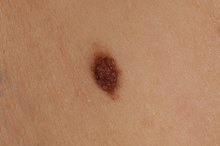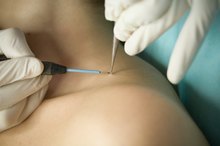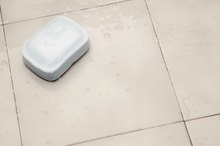Chemical Peels Vs. Fraxel Laser
With so many types of cosmetic procedures available these days, it’s hard to choose which one is right for you. Two of the most popular for skin resurfacing are chemical peels and the new Fraxel lasers. Both of these non-invasive treatments provide younger-looking, healthier skin, but there are differences in procedure, benefits, side effects, recovery times and cost. No matter which procedure you choose, you should make sure that it is performed by a properly licensed and experienced practitioner.
Types
Of the Fraxel lasers, the Fraxel re:pair is the most intense and used on most highly-damaged skin.
Procedures
Chemical Peels for Scars
Learn More
Chemical peels use a solution on your face to dissolve cells in the outermost skin layer and leave the healthier layer of skin underneath. Fraxel lasers use laser beams to create tiny wounds deep in your skin that trigger healing by generating new skin cells and collagen 4. Chemical peels can vary from 20 minutes to two hours, whereas Fraxel treatments will probably only take a half hour. With Fraxel procedures, a topical anesthetic is applied to your face beforehand and your technician may also apply cold air to help improve comfort. Some doctors may choose to give you medication to help you relax, whereas a few others may even prefer to us anesthesia, since the procedure can be painful.
- Chemical peels use a solution on your face to dissolve cells in the outermost skin layer and leave the healthier layer of skin underneath.
Results
The full results of Fraxel treatments aren't visible until a few months after treatment, although even after one session, your skin will already be smoother, softer and have a more even skin tone and texture. A mild alphahydroxy acid chemical peel may show an instant healthier glow to your skin, whereas the deeper phenol peels will require a week or two to heal before you notice more dramatic results such as fewer fine wrinkles and blemishes that in some cases are still readily apparent up to 20 years following the procedure.
Side Effects and Recovery
How to Remove Moles With Glycolic Acid
Learn More
Mild chemical peels can cause stinging, redness, irritation and crusting. In addition, with a trichloroacetic acid peel, you may experience swelling, be limited to a liquid diet and advised not to talk very much for several days. With deep peels, you may need to have petroleum jelly or adhesive tape on your face for several days, although the most potentially serious side effect of deep peels are permanent skin lightening and lines of demarcation. Fraxel treatments, on the other hand, have less downtown, leaving your skin pink and flaking for a few days. Whether you have a chemical peel or and laser skin resurfacing, you’ll kept on antibiotics with a mild pain medication initially and told avoid direct sun exposure or chlorinated water for extended periods. Some individuals have a tendency to form raised or thickened scars, but this is not always predictable. If your skin is prone to allergic reactions or if you have herpes, any skin resurfacing procedure can make these conditions worse.
- Mild chemical peels can cause stinging, redness, irritation and crusting.
- With deep peels, you may need to have petroleum jelly or adhesive tape on your face for several days, although the most potentially serious side effect of deep peels are permanent skin lightening and lines of demarcation.
Costs
According to the American Society of Aesthetic Plastic Surgery, the national average cost for a chemical peel is $870, whereas the Consumer Guide to Plastic Surgery reports that the average Fraxel treatment ranges from $400 to $1,000 per session 123. These costs will vary widely from one region to another and according to the type and number of treatments you choose. In some cases, health insurance may cover the peel procedure, although insurance rarely covers the full cost of Fraxel.
Related Articles
References
Writer Bio
Bonnie Singleton has been writing professionally since 1996. She has written for various newspapers and magazines including "The Washington Times" and "Woman's World." She also wrote for the BBC-TV news magazine "From Washington" and worked for Discovery Channel online for more than a decade. Singleton holds a master's degree in musicology from Florida State University and is a member of the American Independent Writers.









